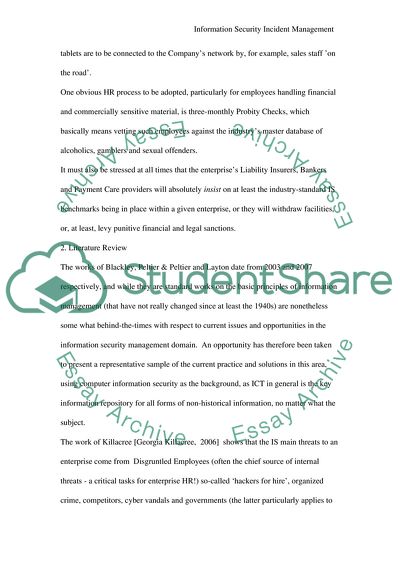Cite this document
(Managing a Computer Security Incident Response Team Research Paper Example | Topics and Well Written Essays - 3250 words, n.d.)
Managing a Computer Security Incident Response Team Research Paper Example | Topics and Well Written Essays - 3250 words. https://studentshare.org/information-technology/1821709-information-security-incident-management
Managing a Computer Security Incident Response Team Research Paper Example | Topics and Well Written Essays - 3250 words. https://studentshare.org/information-technology/1821709-information-security-incident-management
(Managing a Computer Security Incident Response Team Research Paper Example | Topics and Well Written Essays - 3250 Words)
Managing a Computer Security Incident Response Team Research Paper Example | Topics and Well Written Essays - 3250 Words. https://studentshare.org/information-technology/1821709-information-security-incident-management.
Managing a Computer Security Incident Response Team Research Paper Example | Topics and Well Written Essays - 3250 Words. https://studentshare.org/information-technology/1821709-information-security-incident-management.
“Managing a Computer Security Incident Response Team Research Paper Example | Topics and Well Written Essays - 3250 Words”. https://studentshare.org/information-technology/1821709-information-security-incident-management.


